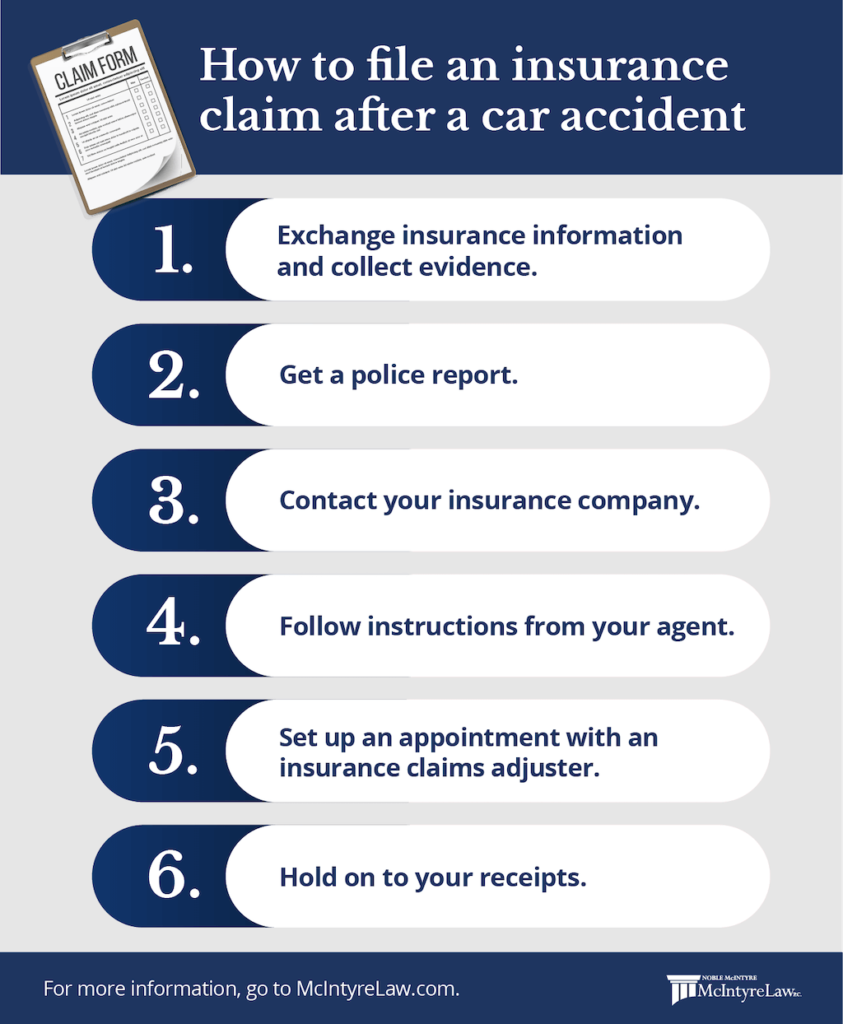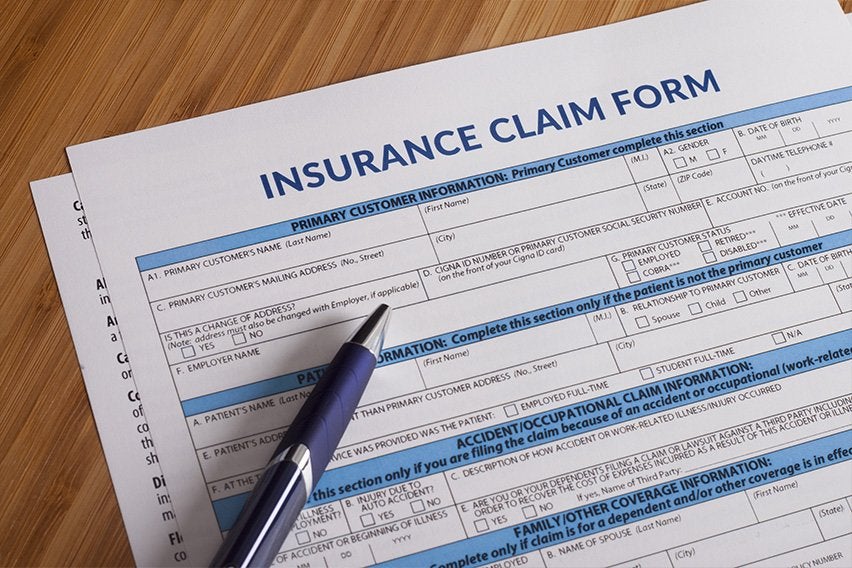To file an insurance claim, contact your insurance company immediately and request a claim form. Complete the form thoroughly and retain a copy for your records.
Filing an insurance claim can feel overwhelming, but understanding the process simplifies it. Whether it’s for auto, home, or health insurance, prompt action is crucial. Start by notifying your insurer about the incident to initiate the claim. They will guide you through the necessary steps, including submitting required documents and evidence.
Documentation is key; gather photos, police reports, or medical records as needed. Knowing your policy details helps you understand your coverage and strengthens your claim. By staying organized and proactive, you can navigate the claim process efficiently and effectively.

Credit: www.ramseysolutions.com
Introduction To Filing An Insurance Claim
Filing an insurance claim can seem overwhelming. Understanding the process helps you feel more confident. A clear plan allows you to navigate the necessary steps with ease. Let’s break it down into manageable parts.
Initial Steps After An Incident
After an incident occurs, take immediate action. Follow these steps:
- Ensure Safety: Check for injuries and call emergency services if needed.
- Document the Incident: Take photos and notes. Capture details of what happened.
- Gather Information: Collect contact details of witnesses and involved parties.
- Notify Your Insurance Company: Contact your insurer as soon as possible.
Understanding The Importance Of Timing
Timing is crucial in filing an insurance claim. Delaying can affect your claim. Here’s why prompt action matters:
| Reason | Impact of Delay |
|---|---|
| Preserves Evidence | Loss of crucial details over time. |
| Expedites Processing | Faster resolution means quicker compensation. |
| Maintains Policy Benefits | Failure to report may lead to denied claims. |
Act quickly to ensure you receive the support you need. Document everything thoroughly. This will help your case significantly.
Preparing To File Your Claim
Filing an insurance claim can feel overwhelming. Proper preparation simplifies the process. Gathering the right information helps you submit a strong claim. This section covers essential steps to prepare effectively.
Gathering Necessary Documentation
Collecting the right documents is crucial. This includes:
- Insurance Policy: Review your policy details.
- Claim Form: Obtain the appropriate claim form.
- Proof of Loss: Gather receipts, bills, and estimates.
- Photos: Take clear pictures of damages or injuries.
- Witness Statements: Collect contact info of any witnesses.
Organize these documents in a folder. This makes them easy to find later. Keep copies of everything you submit.
Recording Details Of The Incident
Documenting the incident thoroughly is essential. Include:
- Date and Time: Note when the incident occurred.
- Location: Record the exact location of the event.
- Involved Parties: List names and contact details of those involved.
- Events Leading Up: Describe what happened before the incident.
- Police Report: Include the report number if applicable.
Use a notebook or digital tool to keep these details. Accurate records strengthen your claim. Review all information before submission.
Choosing The Right Method To File Your Claim
Filing an insurance claim can be stressful. Choosing the right method simplifies the process. Different methods can save time and reduce confusion. Here are two popular ways to file your insurance claim.
Online Claims Process
The online claims process is fast and convenient. Many insurance companies offer user-friendly websites. Here’s how to navigate the online system:
- Visit your insurance company’s website.
- Locate the claims section.
- Fill out the required forms.
- Upload any necessary documents.
- Submit your claim.
Benefits of filing online include:
- 24/7 access to your claim.
- Immediate confirmation of submission.
- Ability to track your claim status.
Filing Via Phone Or Mobile App
Filing a claim via phone or mobile app is another effective method. This option allows for direct communication with an agent. Follow these steps for a smooth process:
- Call the customer service number or open the mobile app.
- Provide your policy number and personal information.
- Explain the details of your claim clearly.
- Follow any additional instructions given by the agent.
Advantages of using the phone or app include:
- Immediate assistance from a representative.
- Guidance through the claims process.
- Opportunity to ask questions in real-time.
Choose the method that best fits your needs. Each option offers unique benefits. Evaluate your situation and select wisely.
Navigating The Claims Form
Filing an insurance claim can feel overwhelming. The claims form is a crucial part of this process. Understanding how to fill it out correctly helps ensure a smooth claim experience. Each section matters. Paying close attention to details can make a big difference.
Key Sections To Pay Attention To
Here are the important sections of the claims form you should focus on:
- Personal Information: Provide accurate details like your name, address, and contact number.
- Policy Information: Include your policy number and coverage details.
- Incident Details: Describe what happened, including dates, times, and locations.
- Witness Information: If there are witnesses, list their names and contact details.
- Attachments: Include any supporting documents, like photos or police reports.
Common Mistakes To Avoid
Filling out the claims form can lead to errors. Avoid these common mistakes:
- Incomplete Information: Always provide all required fields. Missing details can delay your claim.
- Incorrect Policy Number: Double-check your policy number for accuracy.
- Vague Descriptions: Be specific about the incident. Clear details help your claim.
- Not Keeping Copies: Always keep a copy of the completed form for your records.
- Missing Deadlines: Submit your claim on time. Delays can lead to denials.
Understanding these sections and avoiding mistakes will help your claim process go smoothly.
After Submitting Your Claim
Submitting an insurance claim is just the first step. After you submit, your insurer will review your claim. This process can take time. Understanding what happens next can help ease your worries. Here’s what to expect.
What To Expect From Your Insurer
Your insurer will start by assigning a claims adjuster. This person will investigate your claim. They will:
- Contact you for more information.
- Review any documents you provided.
- Assess the damage or loss.
During this time, keep your phone close. The adjuster may reach out with questions. Answering quickly can speed up the process.
| Action | Details |
|---|---|
| Contact from Adjuster | Expect a call or email within a few days. |
| Review Documents | They will check your policy and any evidence. |
| Final Decision | You will receive a notification about the outcome. |
Tracking Your Claim’s Progress
Staying informed about your claim is essential. Most insurance companies offer tools for tracking claims. You can:
- Log into your online account.
- Use the mobile app, if available.
- Call customer service for updates.
Keep records of all communications. This will help you stay organized. If delays occur, ask your insurer for reasons. Understanding the timeline can ease your concerns.

Credit: mcintyrelaw.com
Dealing With Claim Adjustments
Filing an insurance claim is often stressful. Understanding how to deal with claim adjustments can ease this process. Adjustments happen after you submit your claim. They help determine how much the insurance company will pay. Familiarizing yourself with the adjuster’s role and preparing for the adjustment process is crucial.
Understanding Adjuster’s Role
The insurance adjuster plays a vital role in your claim process. Their job is to investigate the details surrounding your claim. They assess damages and determine the payout amount.
- Investigate: The adjuster examines the evidence.
- Evaluate: They assess damages to property or vehicles.
- Negotiate: The adjuster negotiates the settlement with you.
- Communicate: They keep you informed throughout the process.
Adjusters must remain impartial. Their goal is to ensure that the claim is fair for both you and the insurance company. Understanding their role can help you navigate the adjustment process effectively.
Preparing For The Adjustment Process
- Gather Documentation: Collect all relevant paperwork.
- Take Photos: Capture images of damages and losses.
- Compile Witness Statements: If applicable, gather statements.
- List Damages: Write down all damaged items.
| Document Type | Description |
|---|---|
| Claim Form | Your completed insurance claim form. |
| Repair Estimates | Estimates from contractors or mechanics. |
| Receipts | Proof of any expenses incurred. |
Prepare questions for the adjuster. This ensures you understand every step. Clear communication helps avoid misunderstandings. Be ready for the adjuster’s visit. A well-prepared approach leads to a smoother claim adjustment process.
“`
Resolving Disputes And Denials
Filing an insurance claim can sometimes lead to disputes or denials. Understanding how to resolve these issues is crucial. You may face challenges if your claim is denied. Knowledge of the next steps can help you secure the coverage you deserve.
Steps To Challenge A Denial
Facing a denial can be frustrating. Follow these steps to challenge the decision:
- Review Your Policy: Check your policy for coverage details.
- Understand the Denial Reason: Read the denial letter carefully.
- Collect Evidence: Gather documents, photos, and reports.
- Write an Appeal Letter: Clearly state your case and include evidence.
- Submit Your Appeal: Send it to the claims department with a deadline.
- Follow Up: Contact the insurer to ensure they received your appeal.
When To Seek Legal Advice
Consider legal advice when disputes escalate. Here are situations where legal help is beneficial:
- Repeated Denials: If your claims are consistently denied.
- Unclear Policy Language: If terms are confusing or ambiguous.
- Significant Financial Impact: If the claim involves a large sum.
- Bad Faith Practices: If the insurer acts unfairly or unreasonably.
Consulting an attorney can provide clarity and support. They can help you navigate the process effectively.

Credit: www.internationalstudentinsurance.com
Final Steps And Preventive Measures
After filing an insurance claim, the journey is not over. Understanding the final steps and taking preventive measures can make future claims easier. This section covers what to expect once your claim is processed and how to avoid problems later.
Receiving Your Settlement
Once your claim is approved, you will receive your settlement. This amount depends on your policy and the damage assessed. Here’s what to keep in mind:
- Review your settlement offer: Ensure it matches your expectations.
- Contact your agent: Ask questions if anything is unclear.
- Get the payment in writing: Keep records for future reference.
Sometimes, you may need to negotiate. Provide evidence to support your case. Be polite but firm during discussions.
Tips For Future Claims Prevention
Preventive measures can save you stress and money. Here are some effective tips:
- Regularly review your policy: Update it as your needs change.
- Document everything: Keep records of damages and repairs.
- Perform regular maintenance: Take care of your property and vehicle.
- Understand your coverage: Know what is included and excluded.
- Keep an emergency kit: Be prepared for unforeseen events.
Taking these steps can minimize risks. You will feel more secure knowing you are prepared for any situation.
Frequently Asked Questions
What Are The Steps Of An Insurance Claim?
To file an insurance claim, follow these steps: 1. Contact your insurance company immediately. 2. Provide necessary details about the incident. 3. Complete and submit the claim form. 4. Document any damages with photos and notes. 5. Follow up regularly until your claim is processed.
What Is The Best Way To Make An Insurance Claim?
To make an insurance claim, contact your insurer immediately. Request a claim form, which they may email. Fill out the form accurately and keep a copy. Provide all necessary documentation to support your claim. Follow up to ensure your claim is processed efficiently.
What Are Three Important Tips On Filing An Auto Insurance Claim?
1. Gather all relevant information, including photos and witness details. 2. Notify your insurance company immediately after the incident. 3. Complete the claim form accurately and keep copies for your records.
How Do I Make A Good Insurance Claim?
To make a good insurance claim, contact your insurer promptly. Complete the claim form accurately and keep a copy. Gather supporting documents, such as photos and estimates. Clearly state your needs in writing, explaining your entitlement. Follow up regularly to ensure your claim progresses smoothly.
Conclusion
Filing an insurance claim can be straightforward if you follow the right steps. Always document your situation thoroughly and communicate clearly with your insurer. Stay organized and keep copies of all correspondence. By being proactive and informed, you can navigate the process smoothly and ensure that you receive the coverage you deserve.
